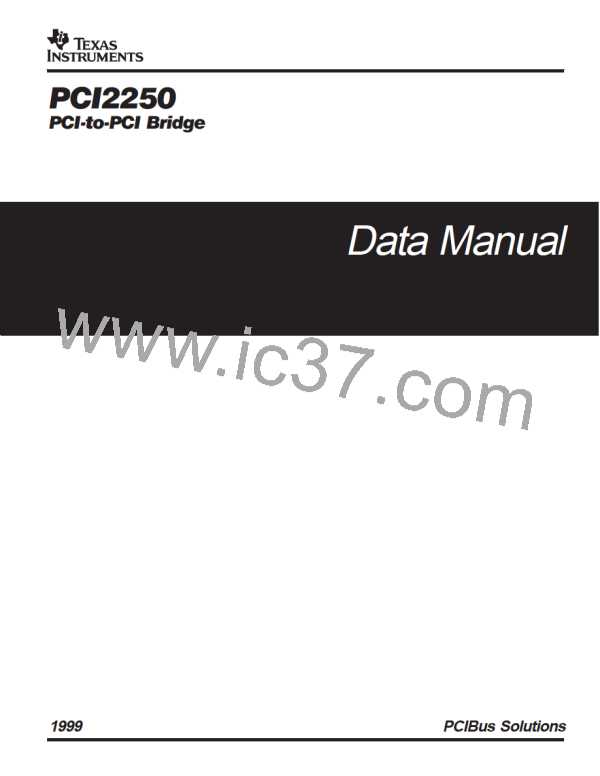1 Introduction
1.1 Description
The Texas Instruments PCI2250 PCI-to-PCI bridge provides a high performance connection path between two
peripheral component interconnect (PCI) buses. Transactions occur between masters on one PCI bus and targets
on another PCI bus, and the PCI2250 allows bridged transactions to occur concurrently on both buses. The bridge
supports burst-mode transfers to maximize data throughput, and the two bus traffic paths through the bridge act
independently.
The PCI2250 bridge is compliant with the PCI Local Bus Specification, and can be used to overcome the electrical
loading limits of 10 devices per PCI bus and one PCI device per expansion slot by creating hierarchical buses. The
PCI2250 provides two-tier internal arbitration for up to four secondary bus masters and may be implemented with
an external secondary PCI bus arbiter.
The PCI2250 provides compact-PCI (CPCI) hot-swap extended capability, which makes it an ideal solution for
multifunction compact-PCI cards and adapting single function cards to hot-swap compliance.
The PCI2250 bridge is compliant with the PCI-to-PCI Bridge Specification. It can be configured for positive decoding
or subtractive decoding on the primary interface, and provides several additional decode options that make it an ideal
bridge to custom PCI applications. Two extension windows are included, and the PCI2250 provides decoding of serial
and parallel port addresses.
The PCI2250 is compliant with PCI Power Management Interface Specification Revisions 1.0 and 1.1. Also, the
PCI2250offersPCICLKRUNbridgingsupportforlow-powermobileanddockingapplications. ThePCI2250hasbeen
designed to lead the industry in power conservation. An advanced CMOS process is utilized to achieve low system
power consumption while operating at PCI clock rates up to 33 MHz.
1.2 Features
The PCI2250 supports the following features:
•
•
•
•
•
Configurable for PCI Power Management Interface Specification Revision 1.0 or 1.1 support
Compact-PCI friendly silicon as defined in the Compact-PCI Hot Swap Specification
3.3-V core logic with universal PCI interface compatible with 3.3-V and 5-V PCI signaling environments
Two 32-bit, 33-MHz PCI buses
Provides internal two-tier arbitration for up to four secondary bus masters and supports an external
secondary bus arbiter
•
•
•
•
•
•
•
•
•
Burst data transfers with pipeline architecture to maximize data throughput in both directions
Provides programmable extension windows and port decode options
Independent read and write buffers for each direction
Provides five secondary PCI clock outputs
Predictable latency per PCI Local Bus Specification
Propagates bus locking
Secondary bus is driven low during reset
Provides VGA palette memory and I/O, and subtractive decoding options
Advanced submicron, low-power CMOS technology
1–1

 TI [ TEXAS INSTRUMENTS ]
TI [ TEXAS INSTRUMENTS ]